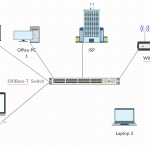Discussion International Marketing
- Which drivers of global marketing do you think are the most important in shaping marketing strategy: internal or external? Explain the reasons for your answer.
According to Mitchelle (2002) written in an article for Harvard Review marketing is strictly based on targeting customers. The goal is to make the brand come alive to entice the target audience. Internal marketing is many cases is never used on a global scale. When marketing globally it requires strategic planning in great detail. Companies must connect to a group of people according to their culture and standards.
Internal marketing departments in most companies are not skilled enough to make an impact in the foreign market to drive sells, unless it’s a billion dollar company such as Apple etc. who has the money to in-house a external marketing team. Marketing is the heart of a company and executives usually spend millions on global marketing to achieve their goals.
- How can intellectual property rights be protected in China?
Guaranteed protection of intellectual property rights are inevitable, however, an effective strategic plan is key to prevention.
Patent and Copy Rights: Companies in China must make sure that they register documents and properties with patent, copyright and trademark companies in China. This method of business is not a requirement but it will help to protect intellectual properties rights.
Companies in China should take advantage of the following programs:
Unfair Competition
China’s IPR Enforcement System
Administration Enforcement
State Intellectual Property Office (SIPO)
- Do you agree that there is little difference between emerging markets and developing countries? Why or why not?
There is a difference between Developing Countries and Emerging Countries. A Developing Country is defined as ‘a poor and agricultural country that is seeking to become more advanced both socially and economically’. An Emerging Country has a different definition: ‘nations with social or business activity in the process of rapid growth and industrialization’. Most Developing Countries aim to become an Emerging Country, which is the step between Developing and Developed. An example of a Developing Country is Ethiopia, which is relatively poor and agricultural. In these countries there are usually government focus to create and Emerging Market, which will then make them an Emerging Country. An example of an Emerging Country is China with its increasing growth and industrial power.
- Would the imports of consumer goods into a given country be a good indicator of the size of the internal market for those products? Why or why not?
Examining the imports of consumer goods into a given country would be good, although incomplete indicator of the size of the internal market for the product. It would be incomplete because without knowing how much of the product is produced domestically, it is impossible to extrapolate exactly what the demand is. However, it is at least a partial indicator, because if a country is importing a lot of a given product, it would be accurate to infer that there is great demand with that information alone. However, without knowing the rest of the product consumption, one can never know completely.
- How can a manager make use of the eclectic decision framework?
Small to Medium Enterprises, also known as SMEs, face many difficult challenges when deciding to outsource. One is simply logistics, in that setting up an operational department overseas is going to pose an initial greater cost (as a percentage of their revenue) than a much larger enterprise. In my opinion though, the greatest challenge for these firms is the human element – larger firms are by their very nature more impersonal and it is easier to lay off departments, in SME’s these departments and employees are more interconnected and it’s going to be a challenge to look them in the eyes and tell them their job has been shipped overseas.
- What in your opinion are the most difficult challenges facing SMEs deciding to outsource?
Small to Medium Enterprises, also known as SMEs, face many difficult challenges when deciding to outsource. One is simply logistics, in that setting up an operational department overseas is going to pose an initial greater cost (as a percentage of their revenue) than a much larger enterprise. In my opinion though, the greatest challenge for these firms is the human element – larger firms are by their very nature more impersonal and it is easier to lay off departments, in SME’s these departments and employees are more interconnected and it’s going to be a challenge to look them in the eyes and tell them their job has been shipped overseas.
- Explain the difference between segmenting and positioning..
Segmenting
The division of a broad market into small segments comprising of individuals who think on the same lines and show inclination towards similar products and brands is called Market Segmentation.
Market Segmentation refers to the process of creation of small groups (segments) within a large market to bring together consumers who have similar requirements, needs and interests.
The individuals in a particular segment respond to similar market fluctuations and require identical products.
Positioning
Positioning helps organizations to create a perception of the products in the minds of target audience.
Ray Ban and Police Sunglasses cater to the premium segment while Vintage or Fastrack sunglasses target the middle income group. Ray Ban sunglasses have no takers amongst the lower income group.
Garnier offers wide range of merchandise for both men and women.
Each of their brands has been targeted well amongst the specific market segments. (Men, women, teenagers as well as older generation)
Reference:
Schlegelmilch, B. B. (2016). Segmenting Targeting and Positioning in Global Markets. In Global Marketing Strategy (pp. 63-82). Springer International Publishing.





